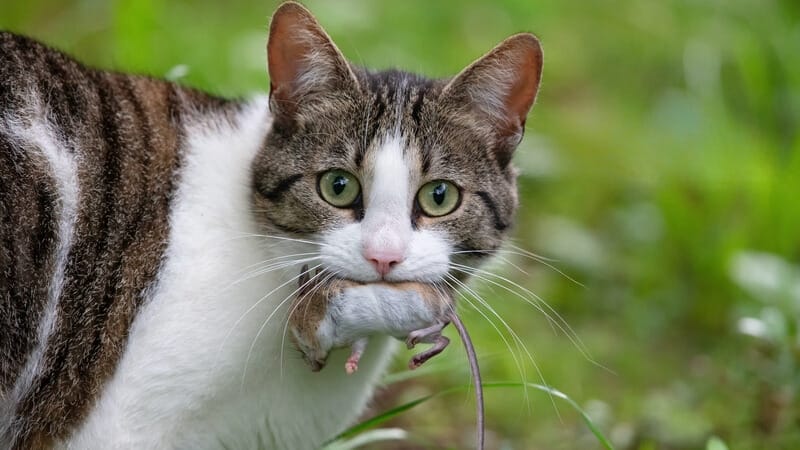
5 Facts About Cat Nutrition

When talking about the nutrition of cats, one should have in mind the North African wild cat as the ancestor of our domestic cats.
1. Cats are predators and pure carnivores (95-98%).
The remaining 2-5% are dietary fibres, which are, for example, the fur or feathers of the prey animals. Even the domestication of the cat has not changed this. They still hunt a large part of their prey themselves, even though they now live closely with humans. Hunting behaviour is innate in cats. Even indoor-only cats want to act out this instinct and imitate a prey bite on toy mice or the like.
2. In the wild, a cat feeds on mice, small rodents, birds, insects and fish.
An adult cat needs an average of 6-12 mice per day. Often more mice (12-24) are caught, but not always eaten. It must be successful in the hunt several times throughout the day.
3. Cats originally come from arid regions and cover their water requirements almost exclusively from their prey.
Wet food contains about the same of moisture (70 -80%), dry food only 7 – 10%. Accordingly, feeding dry food results in large deficits in the fluid balance of the cat. Encourage cats that are fed dry food to drink as well. Drinking
fountains, watering cans and indoor fountains encourage cats to drink. But often the fluid deficits can no longer be compensated for by drinking. This results in a high susceptibility to chronic kidney and bladder diseases
4. A special feature of the cat’s metabolism is that its liver enzymes are active at all times.
These liver enzymes cannot be shut down during periods of starvation. For this reason cats eat 12 -13 times a day. The cat’s body is not able to shut down this activity and that’s why cats should never fast for more than 1 -2 days (risk of hepatic lipidosis and death).
5. The energy and glucose metabolism of the cat differs significantly from that of other mammals.
The cat has hardly any alpha-amylase and can only break down very small amounts of carbohydrates in the small intestine. The cat is missing the active glucokinase that carries out the conversion to glycogen. The glucose remains in the blood and cannot be stored as glycogen. In the cat the B-cells of the pancreas do not wait for an elevated blood glucose level, but for certain amino acids (e.g. arginine) to release insulin and to transport the converted amino acids as glucose to the cells. The system does not react to an increased blood glucose level!
By the way the amount of carbohydrates in mice and birds is 1 -2%, the amount in dry food lies for production reasons between 40 and 60%.






